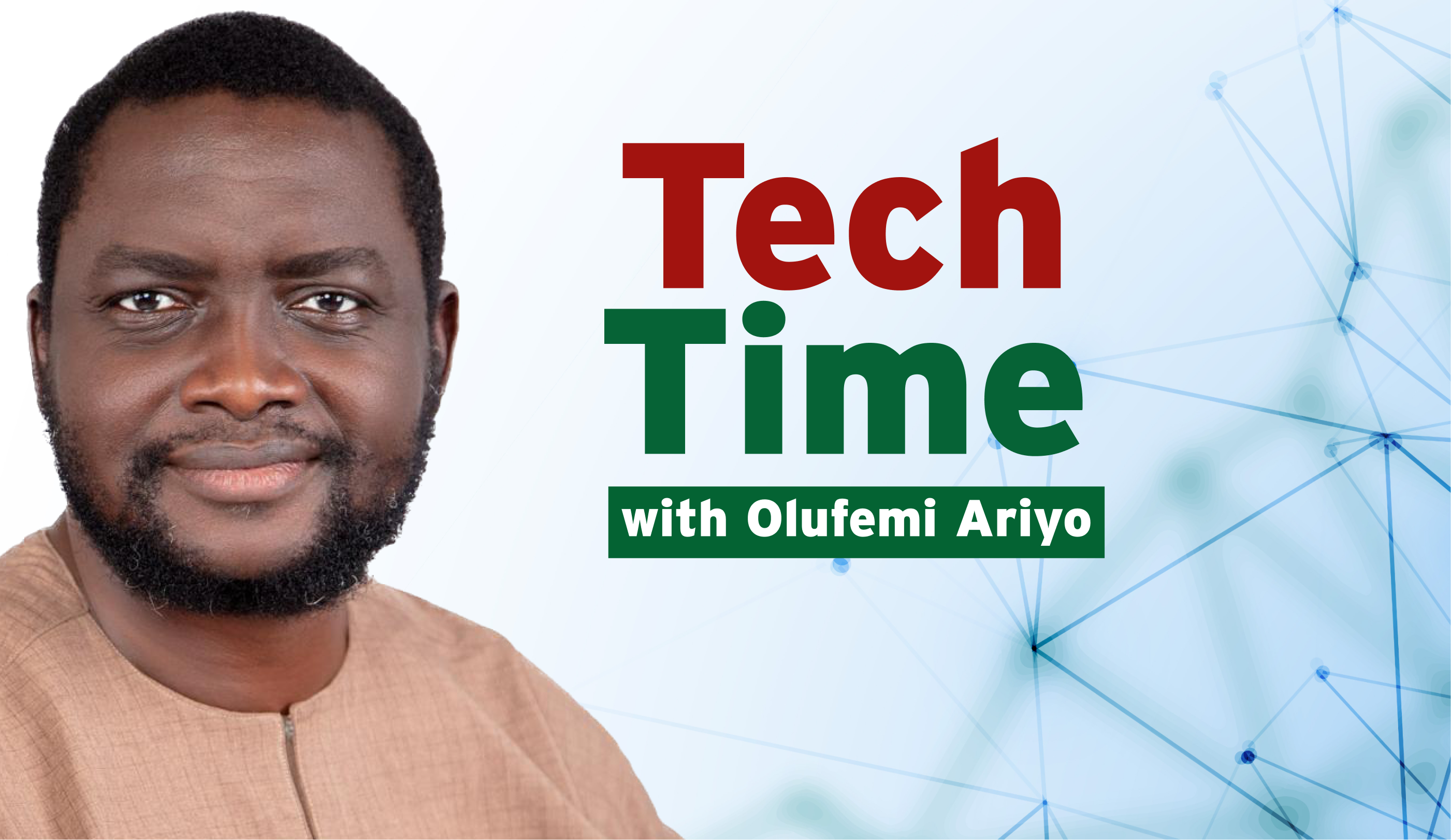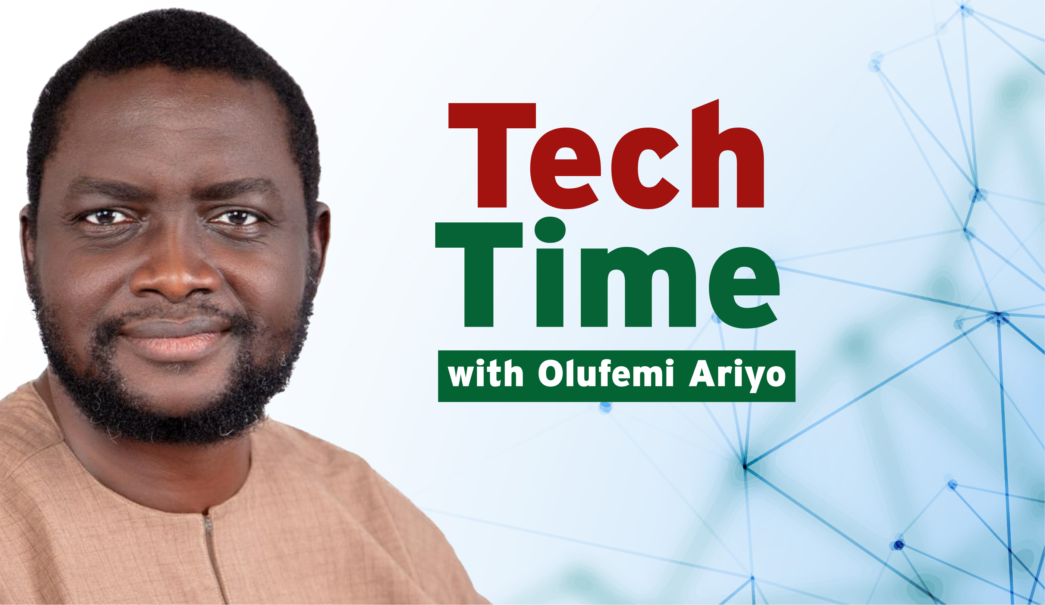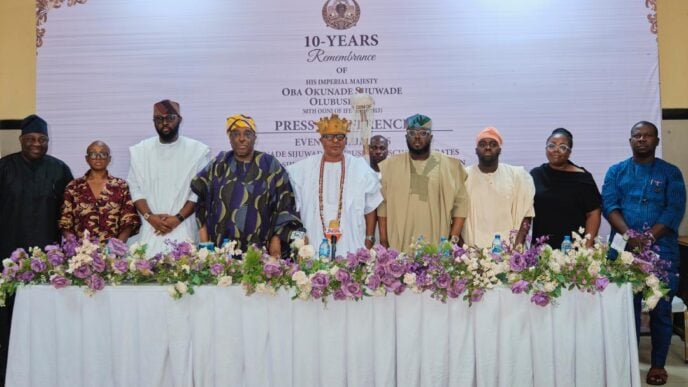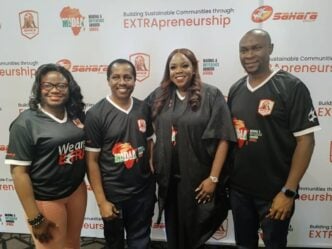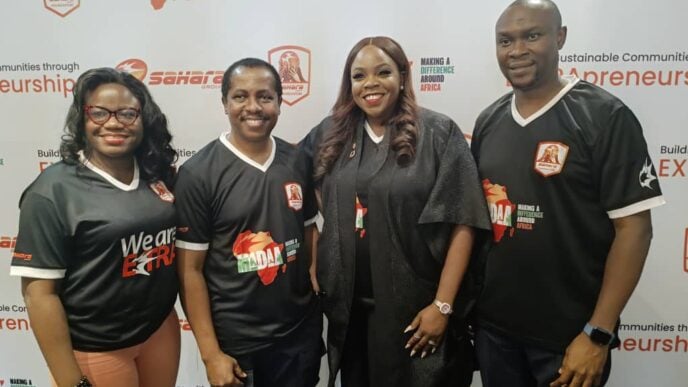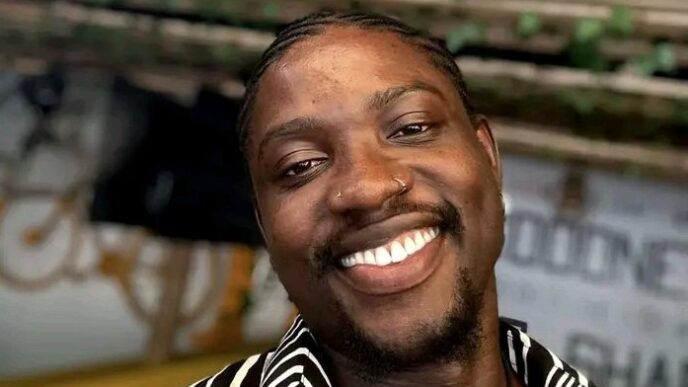It is common knowledge that the youth of today are no longer passive consumers of technology—they must become its creators and drivers. This paper challenges young people to see themselves as the most valuable assets in today’s economy—assets that gain value through the mastery of tech skills, focused training, and deliberate application of oneself to solve real-world problems. By cultivating a “head-first” mindset and continuously improving themselves, youth can transition from job seekers to problem solvers, innovators, and nation builders. Youth must also learn to live from the top of the pyramid down—operating from the highest levels of imagination, creativity, and purpose, and allowing those forces to command the fulfilment of their basic needs.
1. Introduction: You Are the Asset
Let me be clear: I am not worried about what your government does to you. I am not focused on the price of food in your country or how much is left in your bank account. What I am concerned about—deeply—is you: the thoughts you think, the words you speak, and even more, what you have chosen to believe.
Because you are the real asset.
Not oil. Not gold. Not land. You.
Advertisement
A country’s GDP may be measured in natural resources, exports, or currency reserves, but its future—its true potential—is stored in the minds and hands of its young people. If you believe that your background, your lack of resources, or your government’s inaction limits your potential, you have already lost the battle where it matters most: in your mindset.
Ask yourself: What if the most important thing in Nigeria, Kenya, or Ghana is not underground—but online? Not in minerals, but in minds?
Let’s look at an example:
Advertisement
• In Nigeria, Paystack, a digital payments company, was started by two young men, Shola Akinlade and Ezra Olubi. They didn’t wait for the government to fix the banking system. They saw a problem—online payments were difficult—and built a solution. In 2020, their company was acquired by Stripe for over $200 million. That’s not oil wealth. That’s mind wealth.
• In Kenya, M-Pesa revolutionised mobile money. Not by government reform, but by youth-driven innovation solving a real problem: sending and receiving money securely across vast rural areas.
• In Rwanda, Andela—co-founded with African talent—focused on training software engineers for global jobs, proving that location is not a limitation when mindset and skill are aligned.
These are not superhuman stories. They are examples of people just like you, who chose to think differently.
Until you recognise yourself as the asset, your potential remains untapped, your power dormant, and your possibilities locked. A mobile phone in your hand, combined with a trained mind, can do more than most ministries or outdated institutions.
Today’s world is governed by data, code, algorithms, and digital infrastructure.
And in that world, the currency is no longer oil—it’s ideas.
The power is no longer with institutions—it’s with individuals who can solve problems at scale.
Let this sink in: the next globally relevant solution for agriculture, healthcare, education, or transportation doesn’t have to come from Silicon Valley.
It can come from Surulere. From Ibadan. From Jalingo. From anywhere—if the person thinking has stopped waiting and started building.
Advertisement
So yes, I am not worried about how bad things look around you. Iam worried about how bad things look inside you if you keep thinking you are powerless.
This new world does not ask for permission. It rewards initiative.
It does not wait for your government. It rewards your courage.
It does not care about your past. It rewards your productivity.
If you can code, design, analyze, organize, build, or even just think clearly—you have value, and someone is willing to pay for it. You are the asset. And your time to activate that value is now.
Advertisement
2. Maslow’s Hierarchy of Needs: Starting from the Top
Maslow’s Hierarchy of Needs is often taught as a pyramid that starts at the bottom:
Advertisement
1. Physiological needs (food, water, shelter)
2. Safety needs (security, health, stability)
3. Love and belonging (relationships, community)
4. Esteem (recognition, self-respect, achievement)
5. Self-actualization (growth, purpose, creativity)
We are often told to climb it step by step. But let me show you something different—and true:
Those who operate from the top influence and even command the base.
Advertisement
Most people chase food and shelter endlessly. But those who live at the level of vision, creativity, purpose, and contribution—even in the midst of uncertainty—learn to generate solutions that secure the base for themselves and others.
Let us break this truth down with examples:
Advertisement
a. Living from the Top: The Creator’s Advantage
Take Mark Zuckerberg or Elon Musk. They did not start with basic needs—they started with ideas. Facebook came from the desire to connect people. Tesla from a vision of a sustainable future.
Now let’s bring it closer to home:
• In Uganda, Brian Gitta, a young man who contracted malaria repeatedly, imagined a device that could diagnose malaria without drawing blood. That vision became Matibabu, a portable, non-invasive malaria test device.
He did not start by looking for salary—he started with self-actualisation, and in solving a national problem, he found funding, recognition, and financial security.
He did not start by looking for salary—he started with self-actualisation, and in solving a national problem, he found funding, recognition, and financial security.
• In Nigeria, Temie Giwa-Tubosun envisioned a tech-enabled blood donation platform called LifeBank, now delivering critical blood and oxygen supplies to hospitals.
Her purpose-driven action solved a life-or-death safety needfor thousands—yet her journey started from the top of the pyramid.
Her purpose-driven action solved a life-or-death safety needfor thousands—yet her journey started from the top of the pyramid.
Lesson?
When you think and act from purpose, you tap into a higher level of energy that bends reality around you. This includes financial, emotional, and relational breakthroughs.
b. Imagination and Words: The Tools That Cost Nothing
You may say, “But I don’t have money, access, or connections.”
And I say, you have the most powerful tools already:
• Imagination:
This is your internal prototype lab. It is how every solution is born. It allows you to test a business, sketch a product, visualise a future—before you ever spend a kobo.
“If you can see it in your mind, you can hold it in your hand.” – Bob Proctor
This is your internal prototype lab. It is how every solution is born. It allows you to test a business, sketch a product, visualise a future—before you ever spend a kobo.
“If you can see it in your mind, you can hold it in your hand.” – Bob Proctor
• Words:
Words form ideas, build trust, attract allies, and communicate value. Whether written (email, proposal, tweet) or spoken (pitch, podcast, conversation), words move resources. Words open doors.
Think of Eben Upton, founder of Raspberry Pi. He didn’t build a multi-million-dollar computing tool just by tinkering with circuits—he wrote blogs, explained his vision, used words to rally a community. That community funded and scaled the vision.
Words form ideas, build trust, attract allies, and communicate value. Whether written (email, proposal, tweet) or spoken (pitch, podcast, conversation), words move resources. Words open doors.
Think of Eben Upton, founder of Raspberry Pi. He didn’t build a multi-million-dollar computing tool just by tinkering with circuits—he wrote blogs, explained his vision, used words to rally a community. That community funded and scaled the vision.
c. Rewiring the Pyramid: From Internal Power to External Provision
Start acting like someone who has something to give—not just something to get.
When you start from the top of the pyramid, you act differently:
• You pursue growth instead of mere survival
• You build communities instead of begging for inclusion
• You design solutions instead of waiting for donations
Let’s say you are in a village where farmers can’t predict rainfall. You start learning about weather APIs, data visualisation, and app development. You imagine a mobile app that notifies farmers of rain patterns. You start sharing the idea, joining tech communities, building a prototype.
Within 6 months, you have solved a basic survival problem—by starting from imagination and vision.
So, Master the Top, and the Bottom Follows
If you only focus on survival, you become reactive and limited. But when you focus on vision, contribution, and growth, you become creative—and creators attract provision.
Imagination costs nothing. Words cost nothing. But combined, they can open the vault of opportunity.
So, do not let hunger stop your ideas—let your ideas stop hunger.
Don’t let fear of lack paralyse you—let your purpose generate provision.
Live from the top. Build from within. Influence from above.
You are the asset.
Start building like one.
3. Technology as a Gateway to Relevance
It is evident today that technology is not just a tool—it is a passport to influence, income, and impact. Whether you are passionate about agriculture, healthcare, logistics, education, entertainment, or even politics, tech skills elevate your voice and expand your reach.
The internet, smartphones, cloud computing, and AI have levelled the playing field. A teenager in Ibadan with a laptop and internet connection can now compete with peers in Berlin, San Francisco, or Singapore—if they have the right skills.
In the 21st century, your relevance is determined not by your background, but by your bandwidth—your capacity to learn, apply, and build with technology.
Let us go deeper into each critical tech skill in detail and show how it connects to solving problems and creating opportunity:
a. Digital Literacy – Know How to Use Tech Responsibly and Confidently
This is your foundation. It is more than browsing Instagram or using WhatsApp. It is about:
• Understanding how digital systems work (emails, apps, cloud storage)
• Protecting your data and identity online
• Using tech to work, learn, and collaborate
Real-life value:
A young fashion designer who learns Canva, Instagram marketing, and WhatsApp Business can triple their reach and income without needing a physical store.
b. Coding & App Development – Create the Tools That Run the World
Whether it is a fintech app, an e-learning portal, or an e-commerce store, software runs everything. Learning languages like Python, JavaScript, or Flutter gives you the power to:
• Build solutions to local problems
• Work as a freelancer or remote developer
• Launch your own tech startup
Real-life value:
A young developer in Uganda used Flutter and Firebase to build a mobile app that connects smallholder farmers directly with local markets. By eliminating middlemen, the app helps farmers get fair prices and buyers access fresh produce faster. The platform now serves over 500 farmers and is being considered for integration by a regional agricultural cooperative.
c. Data Analysis & Visualisation – Find Meaning in the Numbers
We live in a world powered by data—health stats, customer feedback, traffic flow, even weather patterns. Those who can extract insights from data can:
• Improve decision-making in businesses
• Predict trends and prevent risks
• Build smarter systems
Real-life value:
A data analyst working with agricultural NGOs uses rainfall and soil data to recommend best planting periods to farmers. This boosts yields and prevents crop loss.
d. Cloud Computing & Cybersecurity – Secure, Scalable, Global
Modern apps and systems live on the cloud. Learning how to deploy, manage, and secure cloud-based infrastructure (AWS, Azure, Google Cloud) makes you a critical asset to any business.
• Cybersecurity protects that infrastructure from hacks and breaches
• Cloud skills let you build once, and serve millions globally
Real-life value:
A young graduate in Ghana earns in dollars as a cloud admin for a U.S. startup, while living at home. Why? Because he trained himself online, passed AWS certifications, and joined global freelance platforms.
5. AI & Automation – Teach Machines to Work Smarter
AI isn’t the future—it’s now. From chatbots to fraud detection, AI tools solve problems faster and at scale. Youth who learn machine learning, natural language processing, and automation tools like Zapier or TensorFlow are on the cutting edge.
Real-life value:
A student automates her school’s attendance system with facial recognition, saving teachers hours weekly and improving accuracy. She is invited to speak at a local innovation hub.
6. UI/UX Design – Make Tech Usable and Beautiful
Even the best software fails if people can’t use it. UI/UX designers ensure that apps and websites are easy, enjoyable, and effective. Tools like Figma, Adobe XD, and Framer help bring ideas to life visually.
Real-life value:
A Nigerian artist learns UI/UX and lands a contract with a U.K. tech company designing fintech interfaces—for $2,000/monthworking from her computer—without leaving her home.
7. Product Management – From Idea to Impact
PMs are the bridge between vision and execution. They define product goals, manage teams, and deliver solutions that work. If you like planning, coordinating, and shipping real projects, this is your lane.
Real-life value:
A 24-year-old in Kenya leads a local team to launch an e-learning platform. By learning product management, she attracts investor interest and turns her idea into a venture-backed startup.
Technology Skills = Modern Currency
Each of these skills is a form of digital capital. You can:
• Trade them for income (freelance, remote jobs, consulting)
• Multiply them for impact (build products, train others)
• Convert them to influence (solve problems, gain recognition)
Youth who embrace technology move from “seeking opportunities” to “creating opportunities.”
Whether you want to earn globally, solve local problems, or build a legacy, tech is your greatest multiplier. And the best part? The learning is free—YouTube, Coursera, freeCodeCamp, and developer communities are open to all.
4. The Problem-Solution-Value Framework: Solve First, Then Scale
The modern world doesn’t reward effort—it rewards impact. And impact is measured by the value you provide, especially when that value solves a real problem.
This is where your journey must begin—not with “how can I make money?” but “what meaningful problem can I solve?”
Step 1: Observation – Pay Close Attention
Begin by paying attention to daily frustrations—your own and those of the people around you.
• Is there a task that people complain is slow or inefficient?
• Is there a lack of access to something essential—health, information, markets?
• Do you see a group of people consistently left out of a solution?
Example: In rural Ghana, many students had limited access to textbooks. One young graduate built a mobile app that digitised open-source curriculum materials. The app works offline and now helps over 10,000 students study more effectively.
Step 2: Ideation – Ask “Can Tech Solve This?”
Not every solution needs to be high-tech. But technology allows you to scale and systematise solutions faster and more affordably.
Ask:
• Can this problem be solved using a mobile app, chatbot, or web platform?
• Could I use data to create smarter decisions or alerts?
• Can automation reduce time, cost, or human error in this space?
Example: A Kenyan logistics student noticed many boda boda (motorcycle taxi) drivers lose money due to poor route planning. He built an AI-based route optimiser using Google Maps API and simple data logging. The app helped drivers save fuel and increase trips by 20%.
Step 3: Training – Acquire the Skills
Once you see the solution clearly, don’t stop there. Go and train yourself to build it—or partner with someone who can.
Learn coding through platforms like:
• FreeCodeCamp
• Coursera
• YouTube
• Google Africa Developer Scholarship
• Andela Learning Community
If the solution needs data, learn data analysis with Python or Excel. If it’s design-focused, master Figma or Canva. Whatever it takes—acquire the tools.
Example: A Nigerian woman, passionate about maternal health, learned basic app design on Figma and collaborated with a developer to launch a pregnancy tracking app tailored for low-income mothers. NGOs now promote it in rural clinics.
Step 4: Delivery – Package and Offer the Solution
Now that you have built something useful, test it. Offer it to real users. Gather feedback. Iterate.
And finally—ask for value in return.
• This could be a subscription fee
• A pay-per-use model
• Licensing to institutions
• Or sponsorship from organisations who benefit indirectly
Example: A student in Rwanda built a platform that matches freelance plumbers, electricians, and carpenters to customers in real-time. After three months of testing, local hardware stores sponsored the platform to advertise their products.
Remember This Truth:
People will gladly pay:
• To reduce pain,
• To save time,
• To gain access,
• Or to feel safer, healthier, or more informed.
And when your tech solution delivers that, you’re no longer “looking for a job”—you’ve built one. Maybe even for others.
5. You Are the Asset: Your Skills Are Your Capital
The world has taught you to look outside for opportunity—jobs, visas, money, or policies. But the truth is, everything starts inside. Your potential is not in your phone, your location, or your network. It is in you.
And here is the mindset shift that changes everything:
Stop thinking like a consumer. Start thinking like a value-generating asset.
A consumer waits to be entertained, rescued, or hired.
An asset creates, builds, and multiplies value.
Every Action Builds or Diminishes Your Capital
Just like a startup builds its product over time, you are a living, growing portfolio.
Your inputs shape your outputs.
• Your phone can scroll Instagram for hours… or be used to complete a Google Career Certificate in data analytics.
• Your time can go into endless entertainment… or be spent building a personal website to showcase your skills.
• Your energy can go to complaining about the economy… or into writing your first line of code, joining a hackathon, or learning to pitch a product.
Every YouTube tutorial you complete adds a brick to your digital house.
Every GitHub contribution you make becomes part of your track record.
Every time you help a friend debug their code, you gain soft skills that matter to teams.
That is what capital looks like in this digital economy.
Think Like a Startup: Turn Yourself Into a Valuable Company
Ask yourself:
• What am I building?
• How do I measure my progress?
• What value do I bring to the table—today?
• Where is my traction—projects, recognition, feedback, results?
Track Your Growth: Keep a journal, portfolio, or GitHub log of everything you learn and build. Reflect often and celebrate small wins.
Refine Your Offering: What problems do you solve best? Are you a great communicator? A UI/UX designer? A full-stack builder? Hone in and go deeper.
Communicate Your Value: Build a digital presence. A simple LinkedIn profile. A Notion or Medium page. A link to your prototype. This is your storefront—keep it fresh.
Attract Partnerships and Capital: Once your value is visible and consistent, collaborators, mentors, and funders will notice. Nobody invests in what they can’t see.
A Resume Is a Snapshot. Your Skills Are the Engine.
Too many people obsess over polishing their CV, but forget to improve the substance behind it.
• A CV is a summary of the past.
• Skills and mindset are predictors of your future.
Companies, clients, and co-founders want people who:
• Can learn fast
• Think critically
• Solve problems
• Build with teams
• Communicate clearly
These do not come from degrees—they come from action, practice, and obsession with growth.
Assets Grow When You Invest In Them
Treat yourself like a financial asset:
• Invest in your learning every day.
• Reinvest your results into deeper growth.
• Market your work and share your journey.
• Learn from feedback and pivot when needed.
Real-World Example:
Funmi, a university dropout in Osun, used his Android phone and free WiFi to teach herself frontend development through YouTube and FreeCodeCamp. She built clones of real apps, shared them on Twitter, and landed freelance clients. Today, she mentors others and co-leads a local development community.
She did not wait for a degree. She treated herself as a startup.
Consider this Thought:
If you treat your skills like currency, the world will treat you like wealth.
You are not just a job seeker.
You are a builder, a brand, a platform, and a movement waiting to scale.
But only if you decide to train, to build, to show up—and to never stop learning.
6. Head-First Mentality: Act Boldly, Not Perfectly
In both tech and life, the winners are not always the most talented—they are the most courageous.
They don’t wait for permission.
They don’t wait to feel ready.
They don’t wait for conditions to be perfect.
They start—with what they have, where they are, and what they know.
They build. They learn. They adapt. And that is how they win.
Start Now: Readiness is a Myth
“If you are not embarrassed by your first version, you have launched too late.” — Reid Hoffman, LinkedIn Founder
The startup world—and the real world—does not reward perfection. It rewards progress.
Your first project, post, pitch, or prototype won’t be perfect. It is not supposed to be.
You won’t know everything. You will fumble through new tools. You will make mistakes. But that’s exactly how growth happens.
• You don’t learn to build apps by reading alone—you learn by launching broken ones.
• You don’t become a confident public speaker by waiting—you improve by speaking and failing forward.
• You don’t find the perfect idea—you test, iterate, and improve in public.
Perfectionism is procrastination dressed in a nice suit.
Start now.
Fail Forward: Mistakes Are the Price of Mastery
Every mistake you make is an investment in your future competence.
• That app that crashed? Now you know what not to do.
• That website no one visited? Now you have learned about marketing and design.
• That grant you didn’t win? Now you know how to write a stronger proposal.
Failure is not your enemy—it’s your tuition.
Successful developers, designers, and founders often have the longest list of “what didn’t work.”
That is what makes them dangerous: they have earned their experience through trying, failing, and trying again.
Collaborate: Growth is a Team Sport
Do not go alone.
• Join a tech community on Discord, Twitter, or WhatsApp.
• Attend local meetups or join online hackathons.
• Pair up with someone on GitHub or co-create with a friend.
Some of your best ideas will come from conversations, not from solitude.
Some of your biggest breakthroughs will come from feedback, not from isolation.
Communities offer:
• Mentorship
• Exposure to new tools
• Emotional support
• Collaborative projects
• Referrals and opportunities
And remember, no one builds Google alone.
Show Up: Consistency Beats Talent
Even if you do not feel smart. Even if your first product is bad. Even if you do not have a job yet.
Show up.
Every day.
Build something small. Read an article. Practice a skill. Share your progress.
Progress is compounded through consistency.
You do not become a tech leader overnight. You become one by:
• Posting your journey weekly
• Releasing small open-source tools
• Mentoring someone
• Writing tutorials
• Building in public
Momentum builds visibility. Visibility builds trust. Trust builds opportunity.
Start with Imagination, Act with Words, Build with Hands
Here is your blueprint:
• Imagination is where the idea is born.
• Words give that idea structure and influence—whether in pitches, posts, or proposals.
• Your hands (and your keyboard) turn the idea into reality.
All three are free tools—and they are already in you.
Real Example:
Fatima, a self-taught developer in Kano, began tweeting her coding journey every day using the #100DaysOfCode hashtag. Her code was not perfect. Her laptop was not new (in fact it was borrowed). Her environment was not ideal. But she showed up. Every day. For 5 months.
One retweet changed her life: a developer in Europe saw her work, offered mentorship, and introduced her to a fully remote job. She now contributes to real products used by thousands. She did not wait. She started head-first.
Consider this Thought:
“The universe doesn’t respond to who you pretend to be. It responds to what you do consistently.” — Olufemi Ariyo
Act boldly.
Launch messy.
Learn out loud.
Build before you’re “ready.”
The world is not moved by perfection.
It is moved by those bold enough to start.
7. Call to Action: Train – Build – Solve – Scale
Let this be your blueprint—not just for success, but for sustained relevance in a world driven by digital transformation. You do not need permission to begin. You need direction and discipline.
The modern economy does not ask what you studied.
It asks: What can you build? What have you solved? Who have you helped?
This four-step loop—Train, Build, Solve, Scale—is the roadmap for turning your potential into real-world impact.
1. Train – Skill Up with Intention
Learning today is free and decentralised. You no longer need a four-year degree to access cutting-edge knowledge (this I tell my brothers and sisters facing the less than 200 on JAMB – you don’t need it for University of the People).
Start with any of these free or low-cost platforms:
• YouTube – endless tutorials on programming, design, AI, blockchain
• freeCodeCamp – complete coding curricula and certifications
• Coursera/edX/Udemy – affordable deep dives into tech domains
• LinkedIn Learning – industry-ready courses in soft and hard tech skills
• Twitter, Discord, GitHub – where live tech conversations and open source happen
Train daily. Start with 30–60 minutes a day. Build a streak.
Choose one path: Frontend dev, Data analysis, Cloud security, etc.
Join a learning community. Feedback accelerates learning.
The first version of you is a student. Always.
2. Build – Start Small, Start Public
Ideas alone are not value. Execution is.
Build:
• A mobile app that solves a local challenge
• A chatbot that helps people report emergencies
• A simple dashboard showing real-time fuel prices or transport conditions
• A landing page for a campaign or community idea
Start ugly. Launch fast. Iterate often.
🛠 Example:
A young girl in Nairobi built a WhatsApp bot to remind her community to take daily medication. With just Twilio, Python, and Google Sheets, she launched a tool that now supports over 500 people weekly. That’s value. That’s relevance.
Every build makes you more:
• Employable
• Visible
• Investable
3. Solve – Focus on Real Problems
Here’s the secret of economic value: solve something painful.
Look around you:
• Is there a logistics challenge in your city?
• Can farmers access market prices in real-time?
• Are students finding it hard to locate free learning resources?
• Is flooding damaging homes in your area?
• Do small businesses struggle with online payments?
Don’t just learn to code—code to solve.
Tools for solving:
• APIs like OpenWeatherMap, Google Maps, Twilio
• Frameworks like Flutter, React, Django
• No-code tools like Bubble, Glide, Airtable
People pay for comfort, speed, security, access, clarity, and convenience.
Use tech to deliver these—and you will never be broke.
4. Scale – Expand the Solution, Multiply the Impact
Once you’ve built and tested a solution:
• Package it: Make it user-friendly
• Present it: Build a pitch deck or case study
• Promote it: Share online, join competitions, contact stakeholders
• Partner up: Collaborate with NGOs, local governments, schools, or businesses
• Monetize: Create a pricing model, donation platform, or subscription plan
Scaling is not just about going viral. It’s about strategic growth:
• More users
• More contributors
• More features
• More impact
Example:
A youth team in Ghana built a platform to connect rural schools with volunteer teachers for remote learning. After winning a local hackathon, they partnered with MTN to scale access across 100+ schools using USSD technology.
Why This Matters
Following this model positions you in three powerful ways:
6. Personal Relevance – You become valuable in any room.
7. Economic Advantage – You attract jobs, clients, or funding.
8. National Contribution – You become a builder of solutions, not a complainer of problems.
This is how change begins—from one project, one problem, one solution at a time.
Yes, The World Is Waiting for Your Solution
“Do not despise the days of small beginnings. Great systems start with small prototypes.” — Olufemi Ariyo
Train.
Build.
Solve.
Scale.
Then repeat. Because the more cycles you complete, the more powerful, valuable, and unstoppable you become.
Your laptop is your factory.
Your mind is your workshop.
Your belief is your currency.
Now go. And keep going.
8. Conclusion: Youth + Tech + Purpose = National Treasure
This generation has what no one before them ever had: free, global access to the tools of transformation.
From the corner of Ikeja or Enugu or Ilorin, you can build a platform that serves someone in Dubai or Dublin.
But only if you believe what is true:
You are not powerless. You are not just a victim.
You are the most important asset in your community.
And your imagination and your words are your most powerful tools.
So:
• Imagine freely.
• Speak boldly.
• Build intentionally.
• Grow consistently.
• Lead decisively.
Your potential is infinite. And the world is waiting—not for your CV, but for your solution.
Thank you for the investment in time, and I am open to discussions on better ways to improve and harness the YOU asset productively. To be alerted each time I create a new post, follow my Medium: https://medium.com/@roariyo and LinkedIn: https://www.linkedin.com/in/olufemi-ariyo/ or send an email to [email protected]
